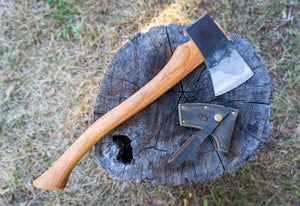
The Art of Storytelling: How to Spin A Good Yarn
Humans are storytelling creatures. We’ve been swapping stories since we could speak. Some of our stories are sacred. Some explain the world around us. Others are just plain fun. Everyone is hungry for a good story, and you can find stories everywhere, from our favorite Netflix series to casual conversations.
We crave epic story arcs and perplexing plot twists, but not everyone can tell a story that keeps an audience on the edge of their seats. While some people seem born with a natural gift, spinning a good yarn is a skill anyone can master with a bit of practice.
The History of Storytelling: We’ve Always Shared Stories
The history of storytelling is a long one, so we’re offering up some abbreviated facts. The beginning of humans telling stories starts with oral traditions and cave drawings before the use of written words or symbols.
Oral Storytelling
Humans have a rich tradition of passing stories through generations. We began by telling each other stories designed to caution against danger, while other stories were shared for special occasions. Then, we started telling stories to explain the natural world and chart our community’s experiences.
We’d pass these stories down from generation to generation, and often the details changed slightly with each generation’s telling. For a long period of time, oral stories were how people shared knowledge and kept history alive.
Cave Drawings
Ancient cave drawings show that humans documented stories and experiences through art as well. Many cave drawings tell about hunts, battles, hardships or blessings. Often, they feature animals and symbols that represent elements of nature. The oldest known cave drawings are found in France’s Chauvet Cave, and they date back 30,000 years. These drawings depict wooly mammoths and other animals no longer in existence today.
Written Stories
Early written language evokes thoughts of ancient Egyptian hieroglyphics—one of the world’s earliest writing systems. Hieroglyphics were used on temples or tombs for religious purposes, and a simplified version was used for business matters. Soon, written systems would also record beloved fictional tales.
The earliest examples of written literature come from ancient Mesopotamia. Some of the oldest written stories date back to around 3400 B.C. The mythic poem, the “Epic of Gilgamesh,” is the oldest written fictional story we know of. It depicts a hero-king named Gilgamesh who goes on a quest to find eternal life.
Other well-known ancient stories include “The Iliad” and “The Odyssey” from Greece. These works feature more heroes—first Achilles and later Odysseus. “The Iliad” is the oldest surviving work of Greek literature, estimated to have been compiled and published around 762 B.C. Famous works like “Aesop’s Fables” have also been around for more than 2,500 years. These are stories we often return to and recreate. You can find echoes of these ancient works in modern novels and films.
Storytelling Techniques: How to Tell a Story
Stories are in our blood—and our brain chemistry. Scientists at Princeton University found that our brains synchronize when we understand stories. Your brain lights up as you tell a story, and the brains of your listeners light up in the same places as they hear it. Stories pass emotions and ideas from teller to listener at a chemical and neurological level.
The desire to participate in story, to pass along wisdom and imagery, is an intrinsic part of who we are as humans. But what makes a good story, and how can you tell one? Follow these 10 storytelling techniques to improve your stories and delivery:
1. Identify your central message.
First, you must know what you are trying to convey. What’s the purpose of your story? Are you trying to entertain your audience or pass down information? What is the idea you are building toward?
2. Conflict is key.
Every terrific story is ripe with conflict. The characters in your story (be they you or someone else) must undergo hardships and challenges. Sometimes they may come out triumphant; sometimes they may not win. Your characters must navigate their strengths and flaws as well as the consequences of their actions.
3. Story structure is important.
What story doesn’t have a beginning, middle and end? Going into your story, you should know where it begins and how you would like it to end. If you think back to high school English class, you’ll remember that most stories follow a basic structure—exposition, rising action, climax, falling action and resolution.
Your exposition introduces the characters, setting and basic conflict. From there, the story builds (rising action) until it meets the climax or turning point. This is often the biggest part of the action or where the conflict peaks. The events in the aftermath of the climax are a part of the falling action, which leads to the story’s resolution.
4. Good stories come from experience.
“Write what you know” is advice often given to up-in-coming writers. While we tell many fictional or mythical stories, they all include elements of real life and human experience. Starting with what you know can help ground your story. Whether you are writing or telling a story out loud, using your personal experiences can bring authenticity to the stories you tell.
5. Reign in the story scope.
A good storyteller knows what details to include and what to leave out. You don’t need to recount everything that happened to you in your story. Doing so could lose your audience in the weeds. If a detail isn’t relevant to the plot or basic setting, you can remove it from the story. A good rule of thumb is to keep things simple.
6. Use sensory details.
Sights, sounds and smells will engage your audience and paint a picture in their minds. Using sensory details helps your audience walk in the story with you—ultimately making for a better tale.
7. Don’t add spoilers.
When we tell stories out loud, our excitement can get the better of us and cause us to add unnecessary spoilers. Don’t ruin the end before you get there! You want to let the tension build. Be aware of transitions or phrasing that outlines your story before you’ve told it.
8. Timing is everything.
Telling a story, especially in person, relies heavily on delivery and timing. Knowing how to time elements of a story is one of the hardest things to master. Good timing builds the drama and makes plot twists feel much more impactful. Take your time as you weave your tale and use pauses to your advantage.
9. Use body language.
Have you ever hung on someone’s every word while they told you a story? Both words and movements set the tone and add tension to oral stories. Changing your body language or including a well-timed gesture adds another dimension to your delivery.
10. Confidence.
Part of telling a good story is having the confidence to tell it. You can tell people the tallest of tales well if you deliver them confidently. When you believe what you’re saying, your audience will be more likely to sink into the story. How you tell your story affects how it will be received.
The Liar’s Club
Ready to put your story skills to the test? Can you spin a yarn everyone will believe? Just how big was that fish you caught?
At Crane’s Country Store, we love a good story, and we have a great origin story of our own. Our store has been in the Crane family for generations, weathering many changing times. Through it all, we’ve been a venue for community.
Our role as a place to gather and connect with others continues each week. Every Thursday around 11 a.m. members of Williamsburg, MO, find community through tall tales at our store. The “Liar’s Club” meets regularly to pass time and share stories. Some are real. Some are...embellished. We’ll let you be the judge.
Shop online or contact us to see what’s in stock at our brick-and-mortar store in Williamsburg, MO.
Think you have what it takes? Stop by, grab a sammie and tell us your best story.









